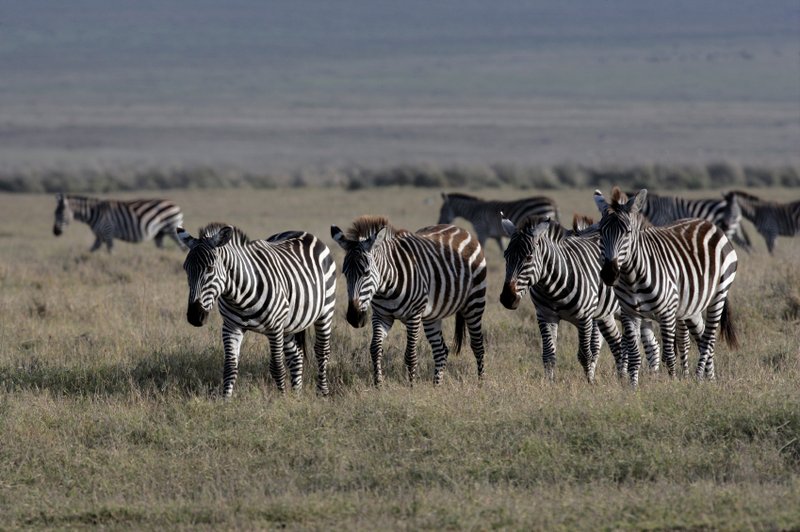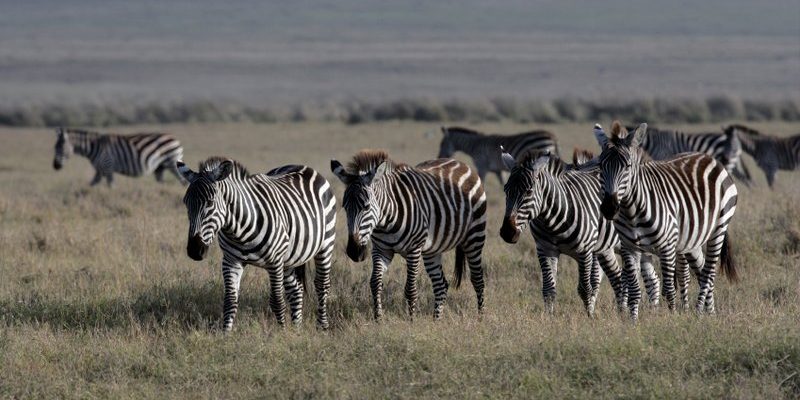
1. Overview of Plains Zebras
Plains zebras, also known as *Equus quagga*, are one of the most common zebra species, celebrated for their distinct stripes. These stripes aren’t just for show; they play a crucial role in social interactions and even in deterring flies! Plains zebras are social animals that thrive in herds, often grazing together and providing protection for one another from predators like lions and hyenas.
You might wonder how they got their name. Well, it comes down to their preferred open habitats, primarily the vast grasslands of East and Southern Africa. These areas are rich in grassland resources, making it easier for zebras to graze and find water. Let’s break down where exactly you can find them in the wild.
2. Distribution Across Africa
Plains zebras inhabit a wide range of regions across Africa, but their heart truly lies in the open savannas and grasslands of the continent. They can be spotted in countries like Kenya, Tanzania, Botswana, South Africa, and Namibia. Their distribution isn’t just random; it’s closely tied to availability of food and water.
Most notably, you can find large populations in the Serengeti National Park in Tanzania, where they participate in the famous wildebeest migration. This annual event sees millions of animals moving through the plains in search of food and water, and zebras are right there in the mix. It’s like a nature’s highway full of adventure!
3. Habitat Characteristics
When it comes to their habitat, plains zebras are quite adaptable. They thrive in various settings, but they prefer areas with a mix of open grasslands and scattered trees. This combo offers them plenty of grazing options while providing shade and shelter from the sun. Here’s what you need to know about their living conditions:
- Grasslands: These areas are essential for their diet, which consists mainly of grasses. Zebras will often move to different areas based on the season, following the lushest patches of grass.
- Water Sources: Plains zebras need to stay hydrated, so they often reside near rivers, lakes, or any water body. This is crucial, especially during the dry seasons.
- Open Spaces: The ability to see predators from a distance is vital for their survival, so open spaces give them a strategic advantage.
4. Migration Patterns
You might be wondering, do plains zebras stay in one place all year round? Not quite! They’re known for their migratory behavior, particularly in East Africa. During the dry season, zebras will travel in search of greener pastures, sometimes covering vast distances.
This migration isn’t just about finding food. It’s also about social dynamics. Moving in large groups helps provide safety from predators. When you see a herd of zebras, it’s like watching a well-coordinated team working together. And the social bonds they form are vital for their survival during these tough journeys.
5. Climate Influence on Habitat
The climate plays a huge role in determining where plains zebras live. They are primarily found in areas with a savanna climate, characterized by wet and dry seasons. During the wet season, grasses grow tall and lush, making it easier for zebras to feast. But come the dry season, zebras may have to move to new locations where water and food are more abundant.
For instance, in regions like Kenya, the short rains and long rains create a cycle that significantly influences their migration and distribution. Understanding these climatic changes helps in conservation efforts, as it highlights which areas need protection to support their populations.
6. Threats to Their Habitat
Unfortunately, the habitat of plains zebras isn’t without its challenges. Human activities, including agriculture, urban development, and poaching, threaten their natural environments. As land is converted for farming or building, zebras lose crucial grazing areas and access to water.
Additionally, climate change poses a significant risk, altering weather patterns and potentially leading to droughts that can devastate their food sources. Conservation efforts are critical in addressing these threats and ensuring that zebras continue to thrive in their natural habitats.
7. Conservation Efforts
So, what’s being done to protect these amazing animals and their homes? Various conservation organizations are focused on preserving the habitats of plains zebras. Protected areas like national parks play a vital role, providing safe havens where zebras can roam freely without the immediate threat of human encroachment.
Community-based initiatives are also important. By involving local communities in conservation efforts, we can create a sustainable environment that benefits both zebras and the people living nearby. You might even find programs where locals can benefit from eco-tourism, ensuring that protecting zebras also means protecting their livelihoods.
8. Conclusion
In summary, plains zebras are more than just a pretty face with stripes; they’re an integral part of the African ecosystem. Their habitat and distribution tell a story of adaptation, migration, and survival in the wild. From the vast grasslands of East Africa to the challenges posed by climate change, every aspect of their lives is interconnected with the environment.
Taking steps to protect these magnificent animals and their habitats is crucial. After all, every stripe tells a story, and by ensuring their survival, we keep that story alive for generations to come. So next time you think of zebras, remember they’re not just living in a picture; they’re part of a vibrant, living tapestry that deserves our respect and protection.

